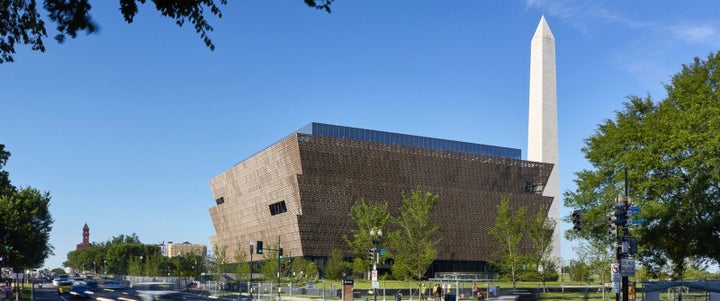On the same day last week we were reminded of the racist expression that, sadly, has been such a significant part of the American narrative. On exhibit. Opposite ends of the country. In a cultural institution and at the home of a cultural icon.
The noose found at the Smithsonian’s National Museum of African American History and Culture in Washington, DC, and the racist epithet spray painted on the gate of the Los Angeles home of NBA star LeBron James are texts of a continuing story—one, it seems, that is not appreciated fully by the public because it has not been broken down, fully contextualized by political leaders or by the media.
The context is the violent enforcement of place, privilege and power in our society. It has to be seen as part of a process that is much larger—and much more threatening—than random acts committed by individual perps, lone wolves, dysfunctional outcasts. That violent enforcement comes at the end of the line—a continuum that begins with the way we come to see ourselves, the way we come to see each other, the way we come to see ourselves in relation with one another. And the way we come to see all this is used to justify the allocation of social benefits, assumed to belong to some and not to others. It is a social construction process fed by the institutions of our society. Including the media.
So, the public needs to recognize this context in order to get it, all of it, beyond the offensive acts that are reported.
Certainly, the n-word spray painted at the multimillion-dollar home of an African American sports superstar—and any other African American, for that matter—is an expression of racism. And, yes, we are in a moment of social incivility—enabled by the shock-jock-in-chief—in which anyone might become a target. And, yes—putting aside whether satirist and HBO TV host Bill Maher recently crossed a line from improvisation to insult in his use of the n-word—we do have to allow room for commentary that employs offensive terms in order to raise our consciousness not only about their offensive nature, but also about the injury they cause. And, yes—putting aside whether anyone from the beat generation’s Lenny Bruce to contemporary hip-hop artists can defuse offensive language by overusing it—there is room in art for expression that provokes.
Clearly, this is different.
As we know—or should know—the n-word has been weaponized. It wounds deeply with its blunt force degrading, dehumanizing, destructive impact. But, as damaging as all this might be, the hostile use of the word must be seen as something even larger than its effect on people victimized by its use. It is an expression of power—the power to determine place in our society, as well as in exclusive neighborhoods.
“So, no matter how much money you have, no matter how famous you are, no matter how many people admire you, being Black in America is tough” LeBron James noted, interpreting the message on his vandalized home. A quiet understatement of deep significance.
That spray painted expression is, in fact, a reminder that social status is assigned, not earned, and it is a warning of the consequences of daring to step out of place. The word is hung around African Americans like a noose. In fact, it arguably is the last word the victims of racist spectacle lynchings ever heard.
Which underscores the meaning of the noose found at the Smithsonian, on the floor of an exhibition on racial segregation—tying into the assignment of place.
Like the pejorative scrawled across LeBron James’ LA gate, that noose is a narrative text. It recounts the history of racial violence in America—of torture and terror—by white mobs who set out to keep African Americans in their place. To punish what was seen as social trespassing and to warn others. Effectively, to wall off entire populations.
The implication here is that the National Mall is no place for posting African American chapters of the American story. That determination will be enforced by the most horrific act—a message that is not lost on the people who understand its full dimensions. “The noose has long represented a deplorable act of cowardice and depravity — a symbol of extreme violence for African-Americans,” the museum’s founding director, Lonnie Bunch III, observed in a statement following the incident. It is an act he characterized (in harmony with LeBron James) as “a painful reminder of the challenges that African-Americans continue to face.”
Indeed, that “painful reminder” is the point of it all. And it is a point that, regrettably, is trending. The Associated Press has reported an increase in recent displays of nooses, with several in the Washington, DC area alone. In fact, just a week before the noose found at the National Museum of African American History and Culture, one was found nearby, just outside the Hirshhorn Museum and Sculpture Garden.
This increase in performative expression tracks an increase in reported hate crimes, like the recent stabbing deaths of Taliesin Myrddin Namkai Meche and Rick Best in Portland, OR. The trend, according to a 2016 report by researchers at the Center for the Study of Hate & Extremism at California State University, San Bernardino, well could be tied to the angry coded rhetoric of the presidential campaign.
Responsible political leadership demands a response. The National Association for the Advancement of Colored People has called upon President Donald J. Trump to denounce the vandalism at LeBron James’ home and the noose at the Smithsonian. That certainly would be an important first step. Silence by elected officials—especially the president—can be taken as an endorsement of hostile acts.
Media stories that clarify this social context also matter greatly. It is the essential role of the media to provide information leading to enlightened public decisions. That enlightenment requires that racist acts be reported on in a meaningful context, one that clarifies the enduring structures of racism. But there is another possibility that flows organically from the Smithsonian incident and is consistent with its transformative mission.
In his public comments last week, LeBron James recalled the late Mamie Till-Mobley’s effort to raise public consciousness about race hatred and violence by allowing the mutilated remains of her slain son, 14-year-old Emmett Till, to be viewed by tens of thousands of people in 1955. Seizing the moment to frame a counter narrative. While there was some pushback on this reference by James, even from supporters (after all, a painted pejorative hardly equates to a brutal lynching), there is a deeper implication here of the take-away.
Now, the National Museum of African American History and Culture can engage public discourse on the meaning of race and power and the violent enforcement of social difference at the end of a rope. Using the text of the noose tell a meaningful story, establishing a counter narrative, elevating public understanding. In effect, using the present moment to clarify the path leading to it, and the course to follow in meeting future challenges to overcome it.

